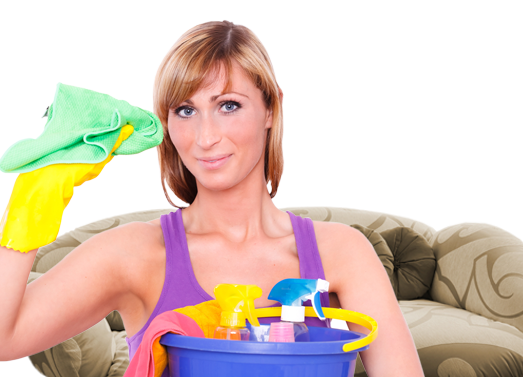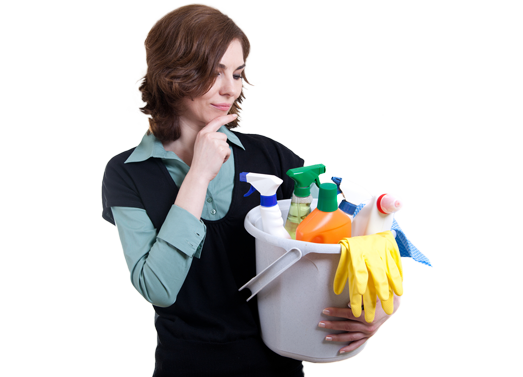Essential Practices for Keeping Allergens and Dust at Bay
Posted on 02/07/2025
Essential Practices for Keeping Allergens and Dust at Bay
Maintaining a healthy home environment is crucial, especially for individuals who suffer from allergies. Dust and allergens, though invisible to the naked eye, can trigger a variety of health issues. By implementing essential practices for keeping allergens and dust at bay, you can create a cleaner, healthier living space, and improve your overall well-being.

Understanding Allergens and Dust
Allergens are substances that can cause an allergic reaction, with dust being one of the most common triggers. Dust comprises a mixture of particles, including:
- Pollen
- Pet dander
- Textile fibers
- Mold spores
- Dead skin cells
- Dust mite droppings
Each of these components carries potential allergens that impact air quality and can exacerbate symptoms for allergy sufferers. Effectively reducing allergens and dust in your home requires a comprehensive, ongoing approach.
Key Practices for Minimizing Allergens and Dust at Home
1. Regular Cleaning Schedule
Establishing a consistent cleaning routine is vital for keeping dust and allergens under control. Focusing on high-traffic areas and surfaces can substantially reduce the presence of irritants.
- Vacuum carpets and rugs at least twice a week using a vacuum with a HEPA filter. Regular vacuuming removes dust, dander, and pollen that accumulate in floor coverings.
- Dust surfaces such as shelves, blinds, and baseboards using a damp cloth or microfiber duster, which traps particles instead of spreading them.
- Mop hard floors weekly to collect small particles not caught by dry dusting or sweeping.
Pro Tip: Choose cleaning products without harsh chemicals or fragrances that may trigger allergies.
2. Optimize Air Quality
Improving indoor air quality is essential to prevent the buildup of dust and airborne allergens. Here's how you can enhance air circulation and minimize contaminants:
- Install HEPA air purifiers in main living areas and bedrooms to capture microscopic particles.
- Change HVAC filters every one to three months, or as recommended by the manufacturer.
- Keep windows closed during high pollen seasons or when outdoor pollution is elevated.
- Use exhaust fans in kitchens and bathrooms to manage humidity and reduce mold growth.
3. Control Humidity Levels
Excess humidity invites dust mites and fosters mold growth, both significant sources of allergens. Aim to keep indoor humidity between 30% and 50% by following these steps:
- Use a dehumidifier in damp areas like basements.
- Fix leaks and address water damage immediately.
- Ventilate rooms regularly to discourage moisture buildup.
4. Minimize Clutter
Clutter attracts dust and makes cleaning more difficult. Keeping surfaces clear and storage organized limits areas where dust can settle. For allergen and dust control:
- Regularly declutter shelves, countertops, and storage bins.
- Store items in sealed containers or cabinets.
- Limit knickknacks, open bookshelves, and plush toys, which can trap and collect dust.
5. Choose Allergy-Friendly Furnishings
Fabrics and upholstery are dust magnets. Selecting the right furnishings makes reducing dust and allergens more manageable. When possible, opt for:
- Leather or vinyl furniture, which are less likely to hold onto dust.
- Washable slipcovers, curtains, and pillowcases.
- Hardwood, tile, or linoleum floors instead of wall-to-wall carpeting.
Wash bedding, curtains, and slipcovers weekly in hot water (at least 130?F/54?C) to kill dust mites.
6. Manage Pet Dander
For pet owners, keeping allergens and dust at bay means extra vigilance:
- Brush and bathe pets regularly to minimize dander.
- Keep pets out of bedrooms and off upholstered furniture.
- Wash pet bedding frequently in hot water.
7. Prevent Mold Growth
Mold spores are among the most potent indoor allergens. To prevent mold from taking hold:
- Clean bathrooms and kitchens regularly with mold-inhibiting solutions.
- Fix leaks immediately to avoid persistent dampness and mold growth.
- Use a squeegee on shower walls after use and ventilate with fans or open windows.
Room-by-Room Tips for Allergen and Dust Control
Bedroom
- Use allergy-proof covers on pillows and mattresses.
- Wash sheets and bedding weekly in hot water.
- Keep closets organized and doors closed to limit dust exposure.
- Remove decorative pillows, heavy drapes, and unnecessary plush items that can collect dust.
Living Room
- Vacuum carpets and upholstery frequently with a HEPA vacuum cleaner.
- Dust electronics, televisions, and light fixtures regularly.
- Opt for blinds or washable window coverings rather than heavy drapes.
Kitchen
- Keep food sealed to avoid attracting pests that can leave droppings and debris.
- Use vents and fans to reduce humidity and cooking fumes.
- Clean surfaces daily to prevent dust, crumbs, and mold.
Bathroom
- Wash bathmats and shower curtains weekly.
- Use an exhaust fan or open a window during and after showers to minimize moisture.
- Regularly inspect for leaks and mildew around sinks, tubs, and toilets.
Specialized Strategies for Severe Allergy Sufferers
Professional Duct Cleaning
Ductwork can harbor dust and allergens. Consider a professional cleaning if it has been several years, or if visible mold or debris are present.
Allergy Testing and Air Quality Assessments
If allergies persist despite rigorous dust and allergen control, consult an allergy specialist for testing. Professional air quality assessments can also pinpoint persistent sources of airborne irritants.
No-Shoe Policy Indoors
Implementing a no-shoe policy helps prevent outdoor dust, dirt, and pollen from spreading inside. Place doormats at entryways and offer slippers for guests.
Frequent Handwashing
Regular handwashing is especially important for children or those with sensitivities. This prevents the transfer of allergens from surfaces to skin and mucous membranes.
Benefits of Maintaining a Dust and Allergen-Free Home
- Reduced allergy and asthma symptoms
- Improved sleep quality
- Better respiratory health for all occupants
- Enhanced comfort and cleanliness
- Prevention of pest infestations and mold growth
By focusing on the best practices for dust and allergen prevention, you take proactive steps toward a healthier home. A consistent routine and thoughtful choices in home design make a significant difference for your family's long-term well-being.

Frequently Asked Questions About Keeping Dust and Allergens Under Control
How often should I clean to prevent allergens and dust accumulation?
Ideally, high-traffic areas should be cleaned at least once or twice a week. Bedding and fabrics need weekly laundering, and clutter should be addressed monthly.
What is the best type of vacuum for reducing dust and allergens?
Choose a vacuum with a HEPA (High-Efficiency Particulate Air) filter. These models trap small particles and prevent allergens from recirculating into the air.
Is it possible to completely eliminate dust and allergens?
Completely eliminating dust and allergens is not realistic, but minimizing their accumulation through consistent cleaning and lifestyle adjustments can significantly reduce exposure and improve health.
Do air purifiers really help with indoor allergens?
Yes, HEPA air purifiers can remove airborne contaminants like pollen, pet dander, and dust mites, improving air quality--especially in bedrooms or main living areas.
Conclusion: Making Allergen and Dust Control Part of Your Lifestyle
Effective allergen and dust control requires ongoing effort. By prioritizing these essential practices for keeping allergens and dust at bay, you create a safer, healthier, and more comfortable environment for everyone in your household. Consistency, smart choices in furnishings and cleaning tools, and a proactive approach to air quality all play a role. Start today by evaluating your cleaning routine and making the necessary adjustments--your health will thank you for it.





